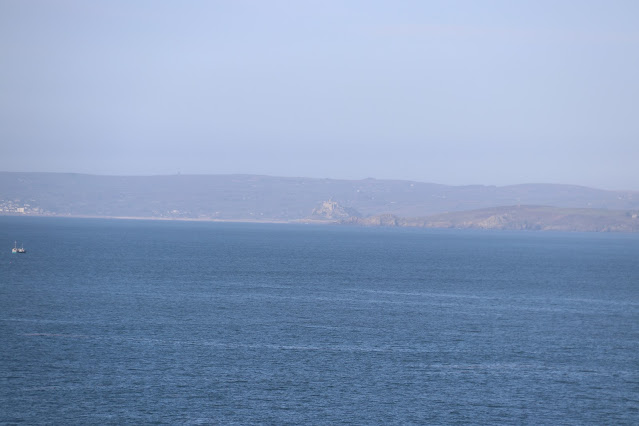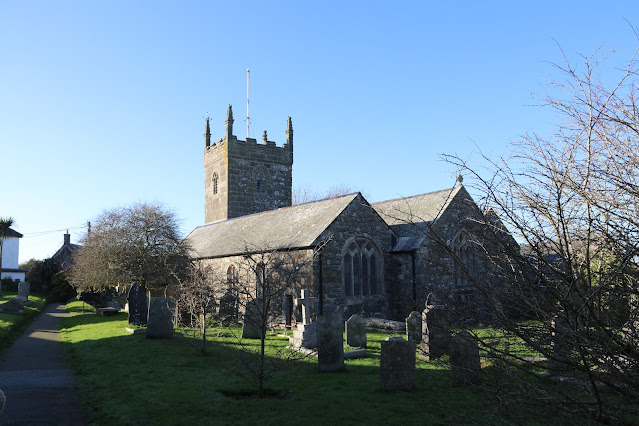 |
| A straightforward walk - out of the door onto the coastal footpath and head towards Mullion Cove. Then inland to Mullion and back via Poldhu Point. At just over 5 miles, it was good exercise. |
 |
| We started off with a competition - how many dogs can you spot on the beach? I can see at least 10. More dogs than people, in fact. |
 |
| Looking towards the Trewoon complex. We are staying in the cottage on the left. Very, very nice. |
 |
| The visibility was not particularly good but St Michael's Mount is clear enough. |
 |
| The swirling sea always accompanies a walk on the coastal footpath, which comes as no surprise as the clue is in the name. Pretty dumb thing to mention, really. |
 |
| Poldhu Cove. Yet another beach that takes a lot of getting to so probably doesn't get too busy when the sun shines. |
 |
| To the left, where we've come from. To the right, where we are going. In the middle, to parts not on our itinerary. |
 |
| A deserted Mullion Cove. Presumably the fishing boats were all at sea. |
 |
| The east window in the chancel - the Adoration of the Magi, dating from 1850. There is some evidence that 'ancient' stained glass was incorporated into the design. |
 |
| The stained glass in the North Chapel east window, showing Mathew, Mark, Luke and John. Dating from 1892, it is dedicated to one of the Robartes of Llanhydrock. |
 |
| Fascinating to look at but not very comfortable to sit on. Good thing traditional services mean lots of bobbing up and down. |
 |
| In the South door there is a small hole at the bottom - the so called ‘Dog Door’ put there to allow farmers’ sheep dogs to leave when they had had enough of the service. |
 |
| I've already mentioned the connection of Marconi to Poldhu Cove and this information board says it all. Click on the image to enlarge it and read all about it. |
 |
| Despite being the site of such pioneering work, the present day appearance of the 'radio' field belies its significance. |
 |
| A Chough. |
 |
| Not a Chough but a Jackdaw. |
 |
| A rear view of a Kestrel. It refused to turn around and let me get a good look at it. |
 |
| A Robin enjoying the sun. |







No comments:
Post a Comment